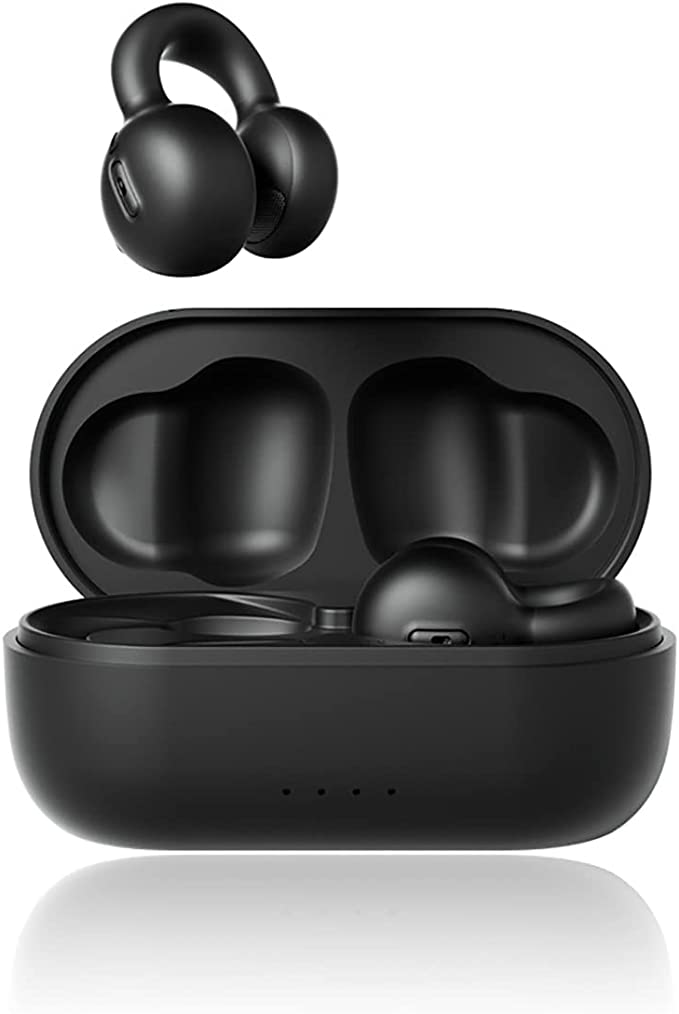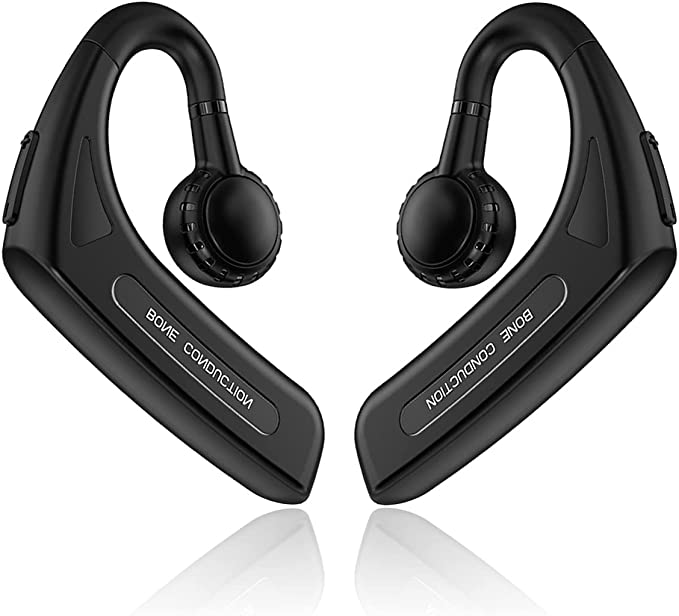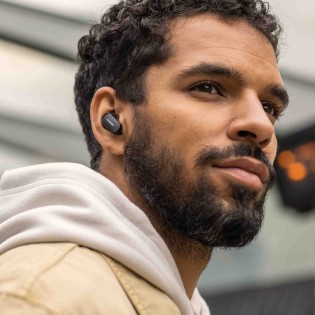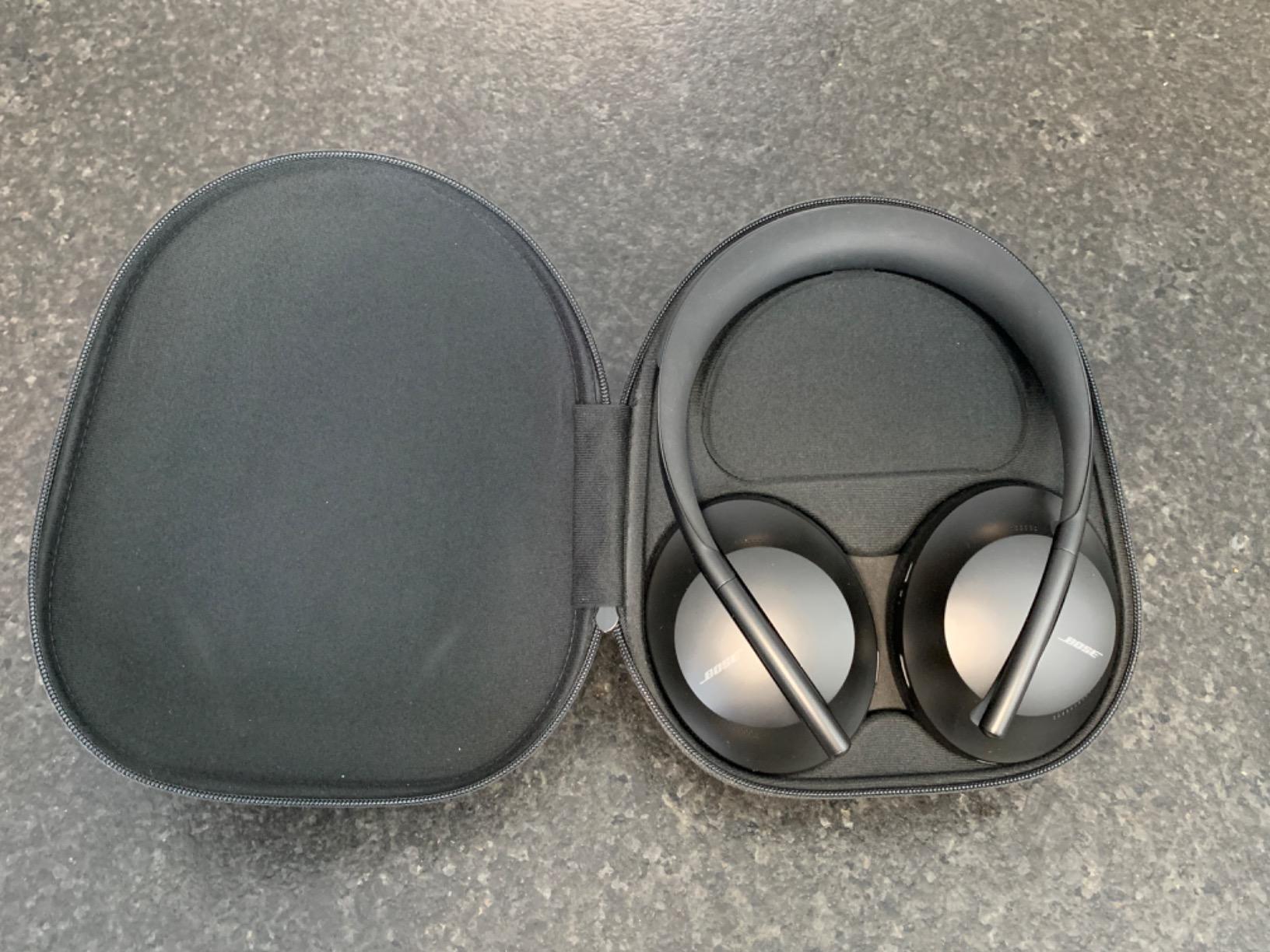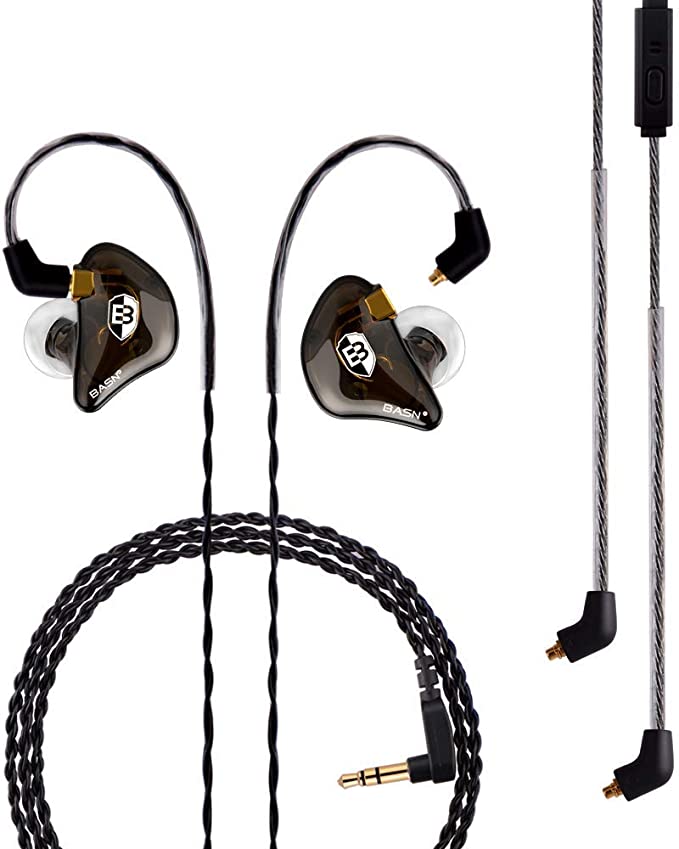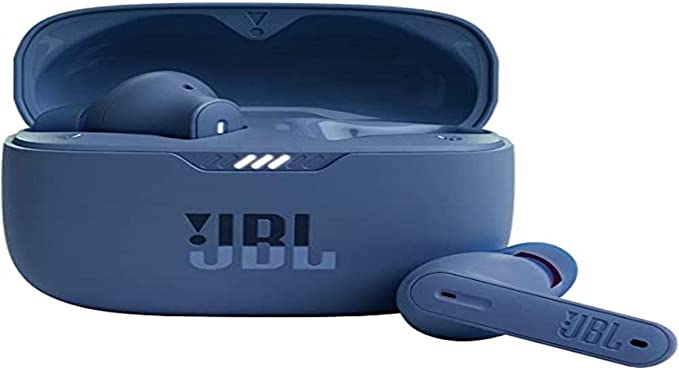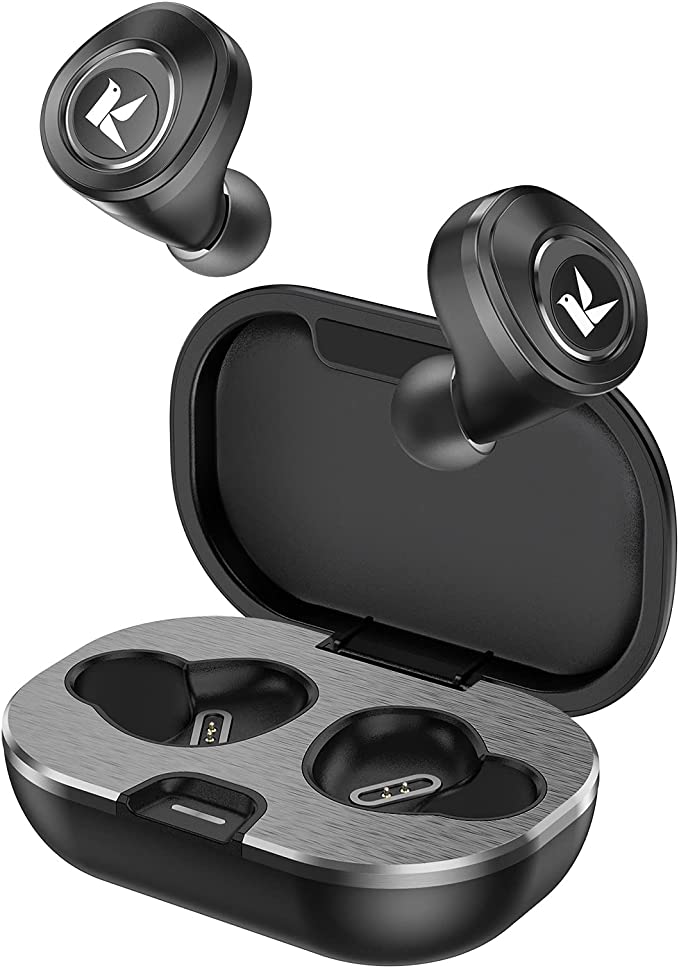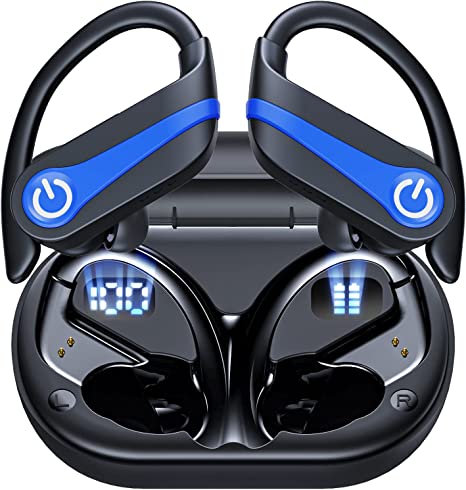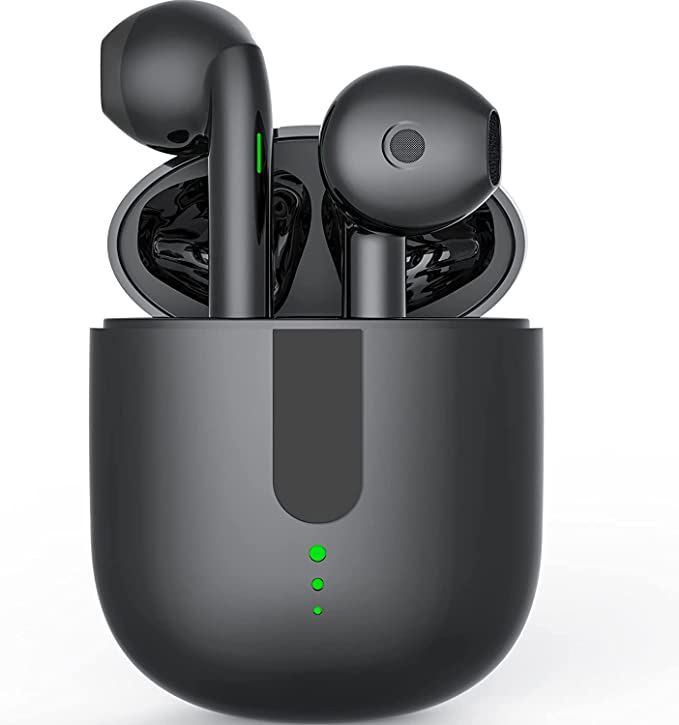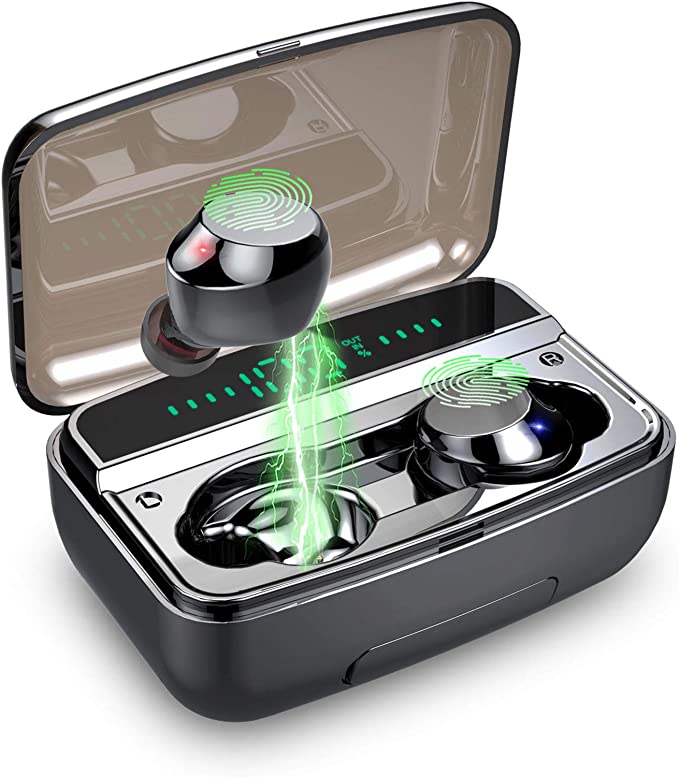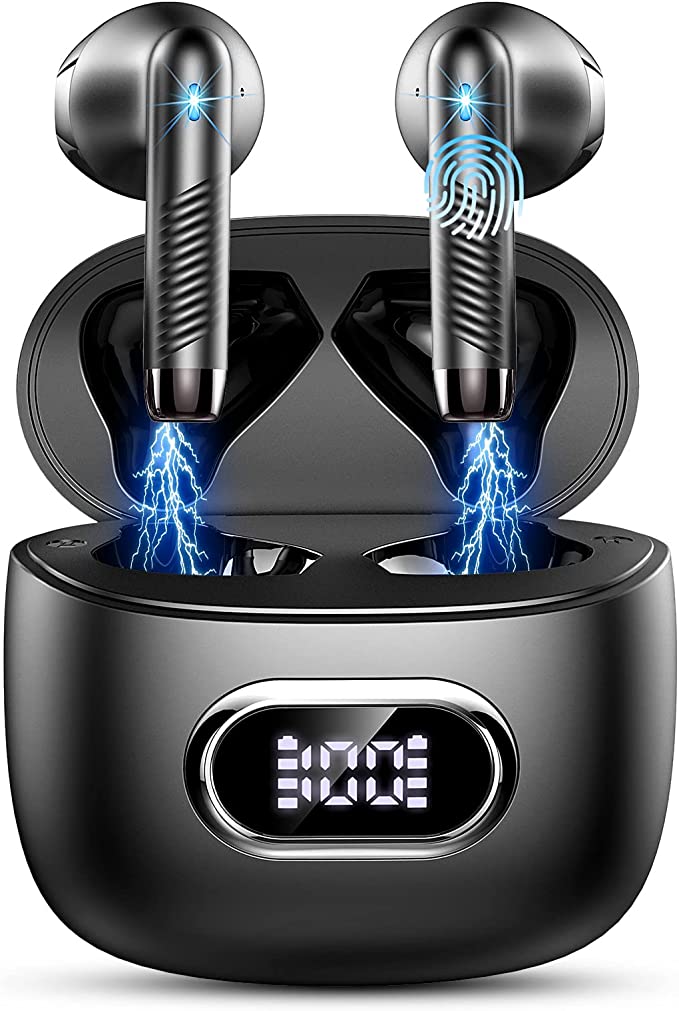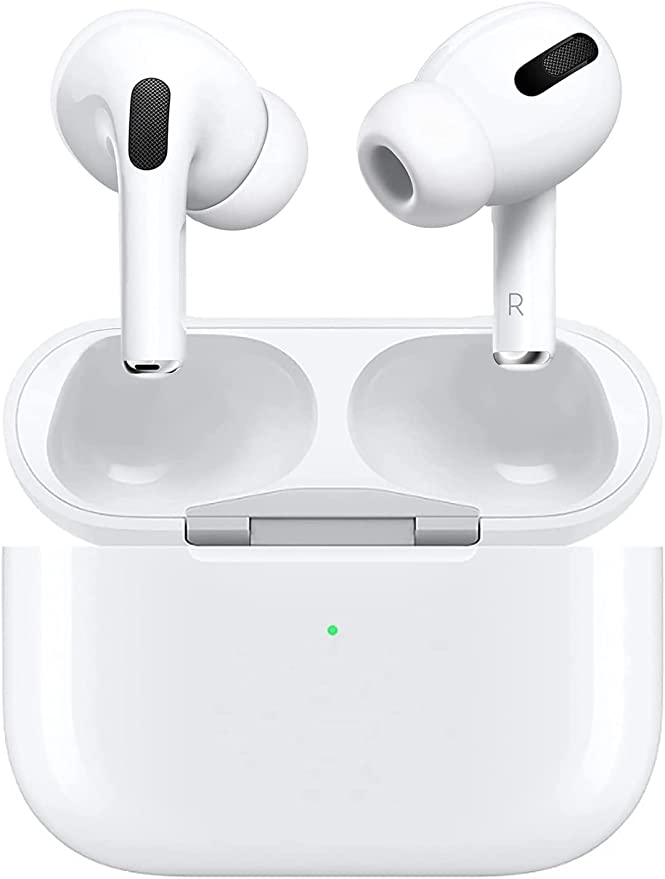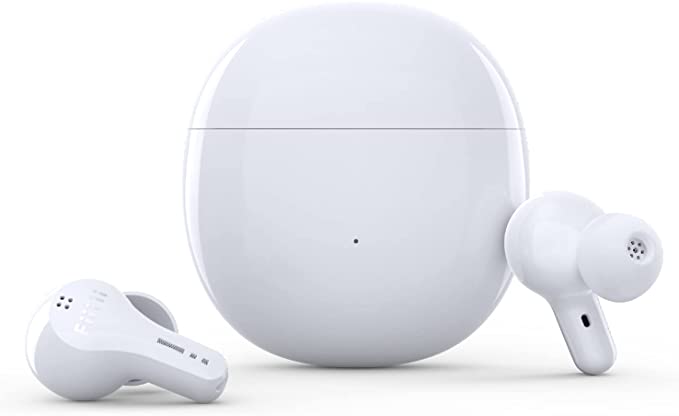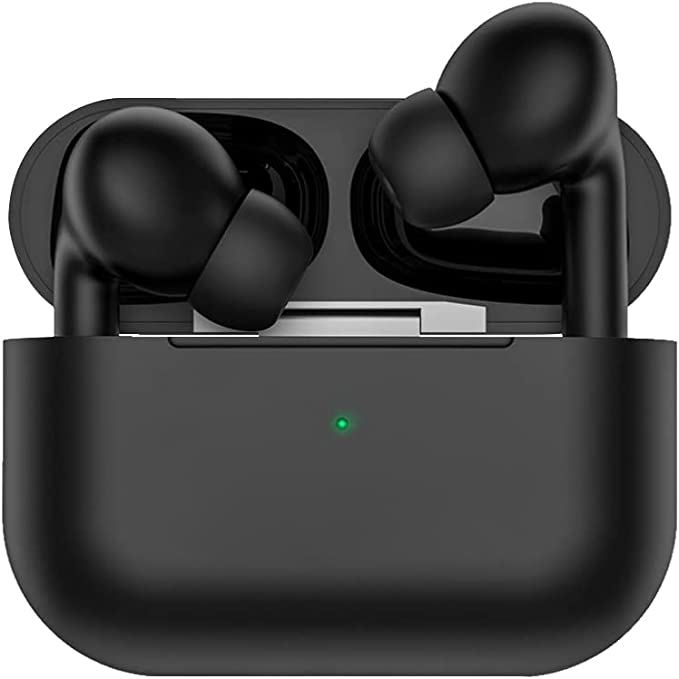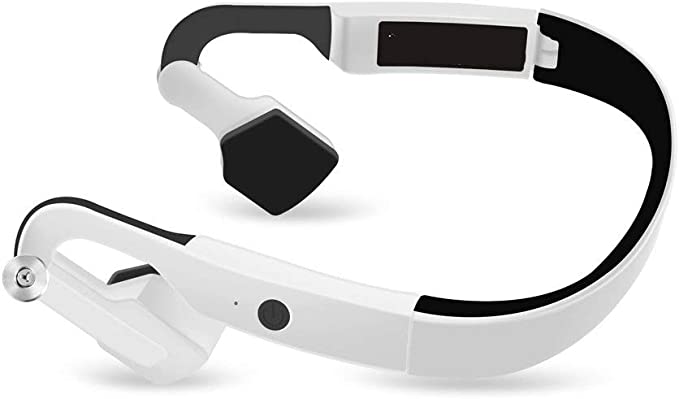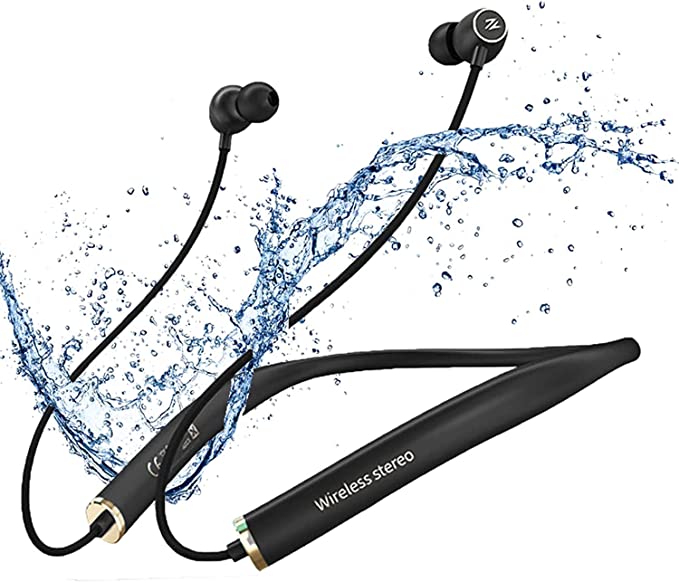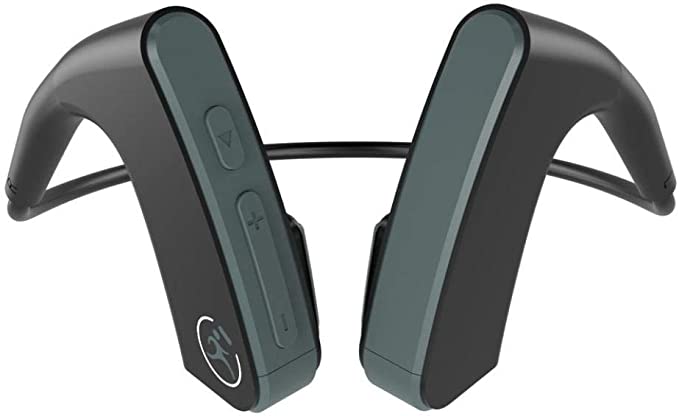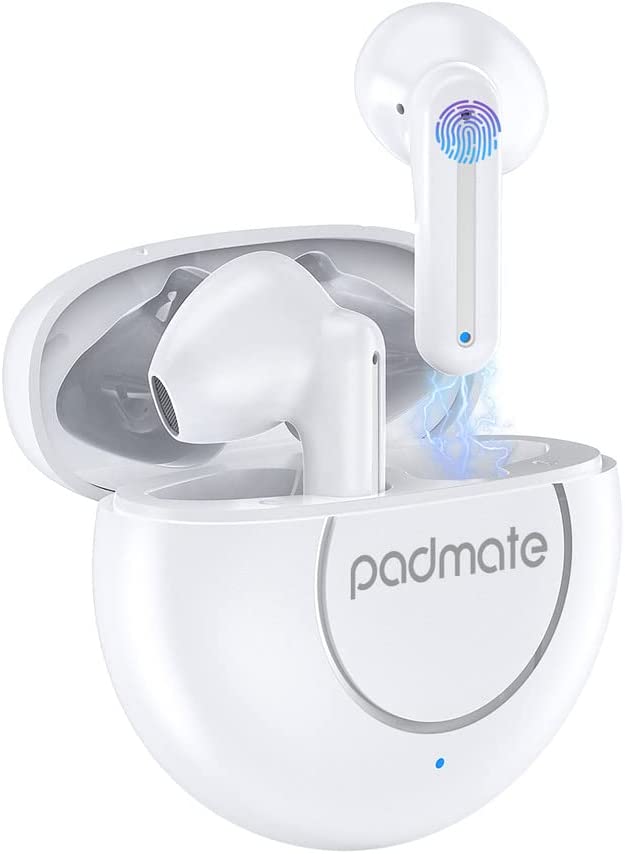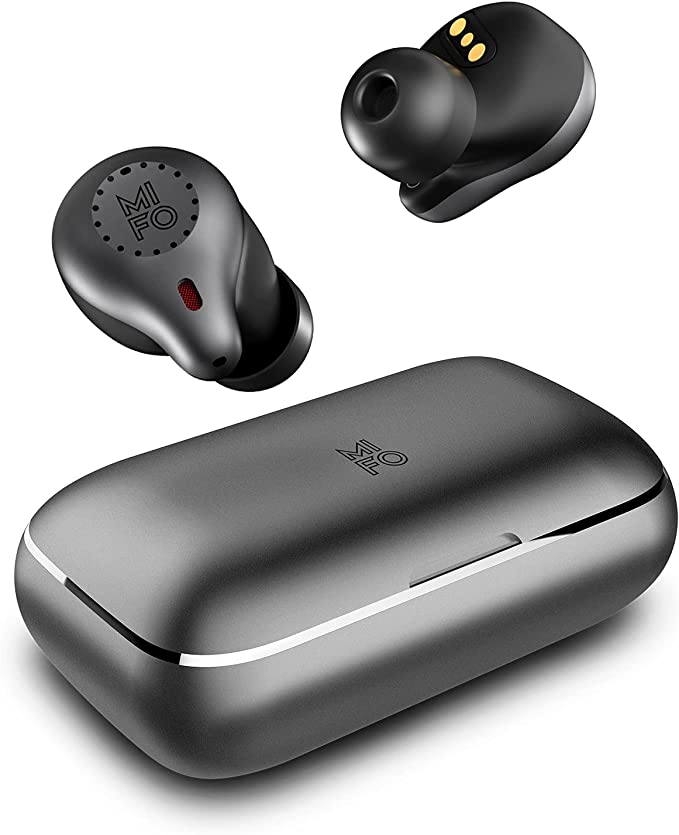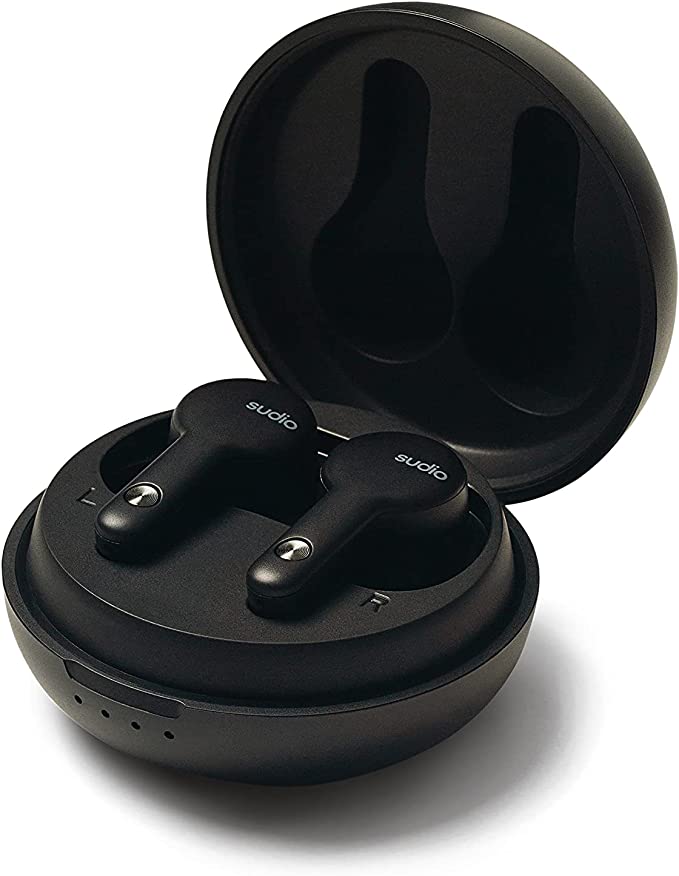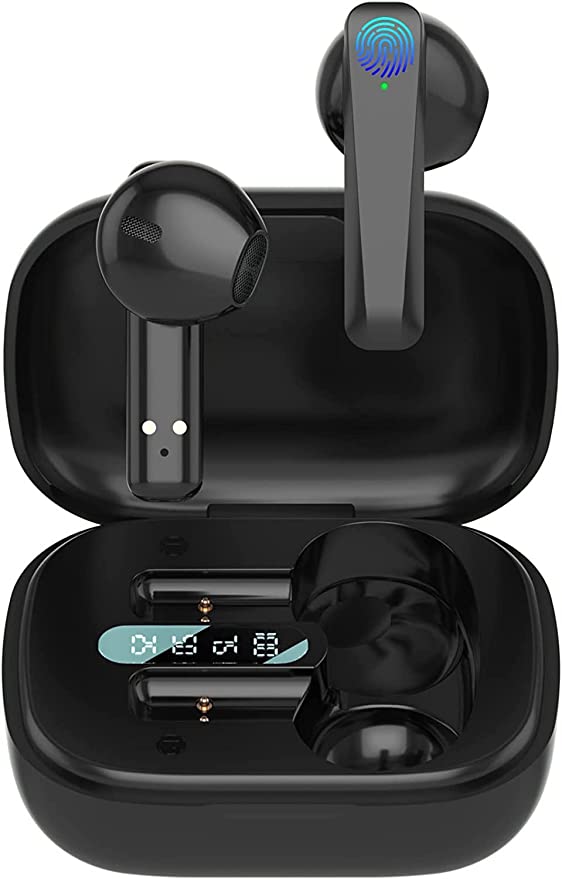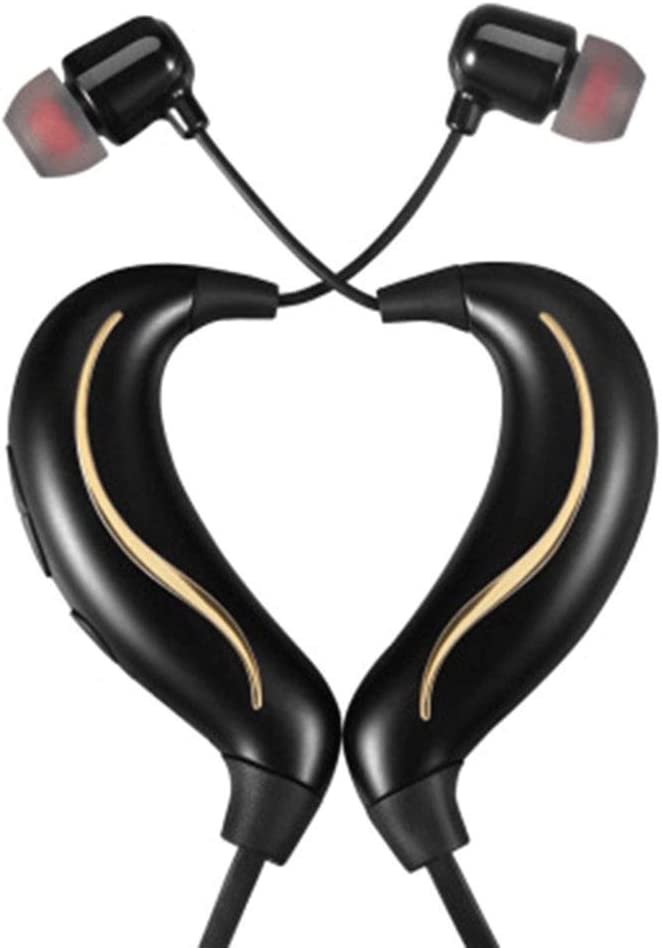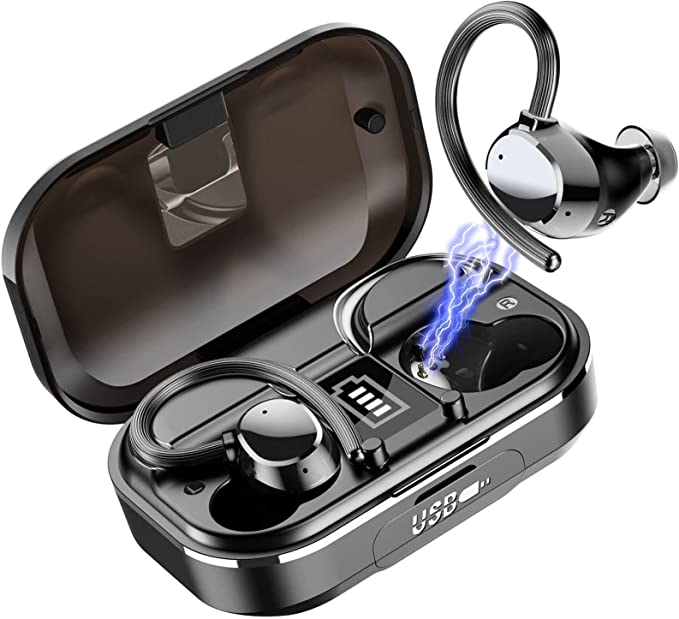PRIVCUST MY14-SKIN Open Ear Headphones: Freedom of Movement Meets Freedom of Sound
Update on May 29, 2025, 10:58 a.m.
In the symphony of daily life, we often find ourselves at a crossroads: to immerse ourselves in the rich soundscape of our personal audio, or to remain attuned to the subtle (and sometimes critical) cues of the world around us. Imagine jogging through a park, lost in a podcast, yet needing to hear an approaching cyclist. Picture yourself in a bustling office, focused on a task with background music, but needing to catch a colleague’s query. Or perhaps you’re at home, engrossed in an audiobook, hoping not to miss the doorbell. These everyday scenarios highlight a growing desire for an audio solution that doesn’t force a choice between immersion and awareness. This is where the concept of open-ear listening emerges, promising a harmonious blend of personal audio and environmental perception.
Today, we’ll embark on a journey to explore the technology behind such designs, using the PRIVCUST MY14-SKIN Open Ear Headphones as a case study. It’s important to state upfront: this article is a technological exploration, not an endorsement or review of this specific product, especially given its current market status. Our goal is to dissect the science and engineering principles its design claims to embody, allowing us to understand the broader landscape of open-ear audio technology. So, let’s delve into the mechanics and magic that aim to redefine our relationship with sound.

A New Dimension of Listening: The Allure and Acoustics of Open-Ear Design
What does it mean for headphones to be “open-ear”? Unlike traditional earbuds that seal the ear canal or over-ear headphones that encase the entire ear, open-ear designs, like the PRIVCUST MY14-SKIN, feature speakers that rest near, but not inside or completely over, the ear canal. Imagine sound as a gentle breeze escuelas your ears rather than a jet of air shot directly into them. This fundamental difference is key to their appeal.
The primary allure is enhanced situational awareness. By not blocking the ear canal, these headphones allow ambient sounds – the chirp of a bird, the hum of traffic, a spoken word – to reach your eardrums naturally alongside your chosen audio. This isn’t just a convenience; it’s a significant safety feature, particularly for outdoor activities like running, cycling, or even walking in busy urban environments. From a comfort perspective, an open-ear approach can also reduce the feeling of pressure or heat build-up that some users experience with occluding designs, making them potentially more suitable for extended wear.
The science behind this primarily involves near-field acoustics and standard air conduction. The drivers (miniature speakers) are positioned to direct sound towards the ear canal opening. It’s distinct from bone conduction technology, which bypasses the outer and middle ear by sending vibrations through the skull bones directly to the cochlea. While both aim for unoccluded ears, open-ear air conduction headphones generally promise a more conventional and potentially fuller sound profile as they utilize the natural pathway of hearing.
The PRIVCUST MY14-SKIN product description mentions “Direct conduction technology T3.0 directional transmission,” claiming it prevents leakage and protects privacy. While “T3.0” appears to be a proprietary term without readily available technical specifications in the public domain, the intent likely points towards a common goal in open-ear acoustics: minimizing sound spillage to the surroundings and directing the audio more precisely to the user’s ear. Achieving true directional sound in such small form factors without significant leakage is a considerable acoustic challenge, often involving careful driver design, housing acoustics, and sometimes (in more advanced systems) sophisticated techniques like sound beamforming, though it’s unlikely such advanced methods are present in a product of this apparent market segment. The core idea is to create a personal sound bubble that’s less intrusive to others.
However, the “openness” that provides these benefits also presents inherent challenges. Sound isolation is naturally compromised. In noisy environments, you might need to increase the volume significantly to hear your audio clearly, which isn’t ideal for hearing health and can also increase sound leakage. Furthermore, achieving deep, impactful bass frequencies can be more difficult without the sealed chamber that in-ear or some over-ear headphones provide, as bass often relies on creating a pressure seal. The private listening experience can also be affected; those nearby might hear your audio if the volume is high or the directional sound technology isn’t perfectly effective.

The Fulcrum of Dynamic Movement: Ergonomics and Material Science in Ear-Clip Design
For any wearable device, especially one intended for active use, how it stays in place is as crucial as what it does. The PRIVCUST MY14-SKIN employs an “ear clip design,” a common strategy to enhance stability for headphones worn during exercise or movement. Think of it as an anchor for your audio experience.
The science here lies in ergonomics and biomechanics. The human ear, with its unique curves and cartilage (the pinna or auricle), provides natural contours that an ear clip can leverage. A well-designed clip aims to distribute pressure evenly, hooking over the top and often curving behind the ear to prevent the earpiece from dislodging due to jogging impact, head turns, or the general jostle of an active lifestyle. The goal is to achieve a secure fit without causing discomfort or pressure points, which is a delicate balance. Individual ear shapes vary greatly, so what’s comfortable and secure for one person might not be for another, making universal ergonomic success a perpetual design challenge.
Material science plays a vital role in realizing this ergonomic intent. The product description mentions “high bounce material” that is “not easy to deform.” In engineering terms, “high bounce” often refers to materials with good elasticity and resilience – the ability to return to their original shape after being stretched, compressed, or bent. For an ear clip, this means it can withstand repeated flexing as it’s put on and taken off, maintaining its clamping force and fit integrity over time. Common materials with such properties include thermoplastic elastomers (TPEs), silicone, or flexible polymers.
Furthermore, the product graphics section alludes to the use of “titanium alloy material,” claiming it’s “not easy to deform and break.” Titanium alloys are renowned in engineering for their excellent strength-to-weight ratio, corrosion resistance, and biocompatibility (making them suitable for skin contact). In headphone construction, particularly for structural elements like an ear clip’s core or headband, titanium can offer a lightweight yet robust frame. This contributes to overall durability and helps maintain the designed shape essential for a consistent and secure fit without adding excessive weight that could lead to discomfort during long wear periods or intense activity. Whether the entire clip or just a reinforcing internal component utilizes titanium alloy isn’t specified, but its inclusion, if substantial, would speak to a design focus on longevity and maintaining form.
Imagine a gymnast executing a complex routine; their every movement is a testament to balance and anchored strength. Similarly, an ear clip design, supported by appropriate materials, aims to provide that reliable anchor for your audio, allowing you to move freely without the nagging worry of a dislodged earpiece.

Capturing the Soul of Sound: The Symphony of HIFI and aptX Decoding
When we listen to music, we’re not just hearing notes; we’re experiencing a tapestry of tones, textures, and emotions. The term “HIFI sound quality,” or High-Fidelity, is often invoked by audio product manufacturers, including PRIVCUST for the MY14-SKIN. At its core, HIFI signifies a pursuit of audio reproduction that is as faithful as possible to the original recording. This generally means low distortion, a wide and flat frequency response (the ability to reproduce a broad range of sounds from deep bass to high treble without overemphasizing or diminishing any particular part), and good dynamic range (the difference between the quietest and loudest sounds). However, “HIFI” itself isn’t a regulated standard for headphones and can be a subjective marketing claim. What one person perceives as HIFI, another might not.
To deliver on the promise of higher fidelity in wireless audio, the MY14-SKIN states it uses “aptX decoding technology.” This is a more concrete technical specification. When sound is transmitted wirelessly via Bluetooth, it needs to be compressed to fit the available bandwidth and then decompressed by the headphones. The specific algorithm used for this compression and decompression is called a codec. The most basic Bluetooth codec, SBC (Low Complexity Subband Codec), is mandatory for all A2DP (Advanced Audio Distribution Profile) stereo Bluetooth headphones, but it’s known for its relatively high compression, which can sometimes lead to a perceptible loss of audio detail, especially in complex musical passages.
This is where codecs like aptX, developed by Qualcomm, come into play. aptX is designed to offer better audio quality than SBC by using a more efficient compression algorithm that aims to preserve more of the original audio data. Think of it like comparing a heavily compressed JPEG image to a higher-resolution one; the latter retains more detail and subtlety. For aptX to work, both the transmitting device (like your smartphone) and the receiving device (the headphones) must support it. When they do, they can negotiate to use aptX instead of SBC, potentially resulting in clearer highs, more defined mids, and a generally richer listening experience, often described as “CD-like quality”—though this is also a somewhat aspirational term. There are various versions of aptX (e.g., aptX HD for even higher resolution, aptX Adaptive for dynamically adjusting bitrate), but the generic “aptX” دعم already suggests an improvement over basic SBC.
The actual sound we hear is produced by the headphone drivers. The MY14-SKIN is listed with a “12mm dynamic ring unit.” A dynamic driver is the most common type found in headphones and works on a principle similar to a miniature loudspeaker: a voice coil attached to a diaphragm (the “ring unit”) moves within a magnetic field when an electrical audio signal passes through it. This movement vibrates the diaphragm, which in turn vibrates the air, creating sound waves. The “12mm” refers to the diameter of this diaphragm. Generally, a larger diaphragm has the potential to move more air, which can be beneficial for producing stronger bass and a fuller sound. However, driver size is just one piece of the puzzle; the diaphragm material, magnet strength, enclosure acoustics, and, crucially, the electronic tuning of the headphone all play significant roles in the final sound signature. A well-tuned smaller driver can outperform a poorly implemented larger one.
So, when you listen to a complex orchestral piece, the HIFI aspiration means hearing the distinct timbres of each instrument. The aptX codec endeavors to deliver the digital data for that richness faithfully over Bluetooth, and the 12mm dynamic driver then has the task of translating that data into the physical sound waves that reach your ears.

The Unseen Pulse of Freedom: Bluetooth 5.3 and Enduring Electrical Stamina
Wireless headphones have liberated us from the tyranny of tangled cables, and the technology underpinning this freedom is Bluetooth. The PRIVCUST MY14-SKIN is “equipped with Bluetooth 5.3 technology,” representing a relatively recent iteration of this ubiquitous wireless standard. But what does a version number like 5.3 actually mean for the user?
Each new Bluetooth version typically brings enhancements in several key areas. While Bluetooth 5.0 was a major leap, subsequent point releases like 5.1, 5.2, and 5.3 have introduced further refinements. For Bluetooth 5.3, some of the notable improvements over older versions (like 4.x or even early 5.x) include: * Enhanced Connection Stability and Efficiency: Features like Connection Subrating can reduce the duty cycle for certain types of connections, improving power efficiency and responsiveness when switching between low and high-duty cycle states. This can translate to a more stable link, especially in a congested 2.4 GHz wireless environment where Wi-Fi, microwaves, and other Bluetooth devices operate. * Improved Channel Classification: Bluetooth devices “hop” between frequencies to avoid interference. Bluetooth 5.3 allows for better channel classification on the peripheral (headphone) side, enabling the headphones to provide the central device (phone) with more accurate information about preferred channels, leading to more robust connections and fewer dropouts. * Periodic Advertising Enhancements: While more relevant for broadcast audio or location services, improvements in how devices handle periodic advertisements can indirectly contribute to overall efficiency and better coexistence in the radio spectrum. * LE Audio Potential (though not explicitly stated for this product): Bluetooth 5.2 introduced the foundation for LE Audio, a new generation of Bluetooth audio with features like the LC3 codec (high quality at low data rates), Auracast™ broadcast audio, and improved support for hearing aids. While Bluetooth 5.3 builds upon this, specific LE Audio feature support depends on the headphone’s chipset and software implementation, which isn’t detailed for the MY14-SKIN.
The product also claims a wireless “range of up to 33 feet” (approximately 10 meters). This is a fairly standard Class 2 Bluetooth range and is generally sufficient for keeping your phone in your pocket or a bag while you listen, or moving around a room. However, this range is an ideal-conditions figure; obstacles like walls, human bodies, and other wireless interference can reduce it.
Of course, wireless freedom is only as good as the battery that powers it. The MY14-SKIN specifications state a “single 6-7 hour endurance” from the headphones themselves, with the accompanying “charging cabin” (the carrying case with its own battery) extending this “up to 30 hours” in total. The headphones are said to require “1.5 hours” for a full charge.
These figures are quite respectable for modern wireless earbuds. A 6-7 hour single-charge listening time would cover most workouts, daily commutes, or several hours of focused work. The charging case then acts as a portable power bank, allowing multiple recharges on the go. The science behind this lies in lithium-ion (or lithium-polymer) battery technology, which offers high energy density in a small, lightweight package. Factors influencing actual battery life include listening volume (higher volume consumes more power), the codec used (some codecs are more power-efficient), the distance from the source device, and even ambient temperature.
Imagine setting off for a weekend trip; the long total battery life means you might not even need to plug the case into a wall charger, offering true untethered convenience for days at a time.

Defying the Downpour and Dust: Decoding the IP67 Waterproof Rating
For headphones designed with an active lifestyle in mind, resilience against the elements is not just a bonus, it’s a necessity. The PRIVCUST MY14-SKIN headphones are advertised with an “IP67 waterproof rating.” This isn’t just marketing jargon; it refers to a specific standard of protection defined by the International Electrotechnical Commission (IEC) under standard 60529. Let’s break down what “IP67” actually means.
The “IP” stands for Ingress Protection. The two digits following it each signify a level of protection against different types of intrusion: * The first digit (6) relates to protection against solid particles, such as dust and dirt. A rating of ‘6’ is the highest level for dust protection, indicating that the enclosure is “dust-tight.” This means no ingress of dust is permitted under test conditions, making the headphones well-suited for use in dusty environments, whether it’s a windy trail run or a workshop. * The second digit (7) relates to protection against liquids, specifically water. A rating of ‘7’ means the headphones are protected against the effects of temporary immersion in water. The standard test conditions for IPX7 involve submerging the product in water up to 1 meter (approximately 3.3 feet) deep for a duration of 30 minutes.
So, an IP67 rating signifies a robust level of protection. For the MY14-SKIN user, this translates to peace of mind in several common scenarios: * Sweat Resistance: Intense workouts inevitably lead to perspiration. IP67 ensures the headphones can handle this without a problem. * Rain Resistance: Caught in a sudden downpour while jogging or cycling? Your headphones should emerge unscathed. * Accidental Spills or Splashes: If water accidentally splashes onto them, they should be fine. * Brief Accidental Submersion: If you were to accidentally drop them in a shallow puddle and retrieve them quickly, they are designed to survive.
It’s crucial, however, to understand the limitations of an IP67 rating. It does not mean the headphones are suitable for all water-based activities. For instance: * They are not designed for swimming. The pressure exerted during swimming strokes and prolonged submersion can exceed what IPX7 is rated for. * They should not be exposed to high-pressure water jets, like a shower or a hose. * Protection against hot water, steam (like in a sauna), or corrosive liquids (like saltwater or chlorinated pool water) is not covered by this rating. * The waterproof seals can degrade over time due to wear and tear, exposure to chemicals (like those in sweat or sunscreen), or extreme temperatures.
Think of an IP67 rating as a sturdy, well-fitted raincoat and galoshes for your headphones – excellent for fending off everyday storms and puddles, but not quite a deep-sea diving suit.
The Elusive Echo of Clarity: A Brief Look at “Clear Call Technology”
In an age where headphones are as much communication devices as they are for listening to music, call quality is a significant factor. The PRIVCUST MY14-SKIN headphones are described as being “designed with clear call technology.” This is a common, albeit rather vague, claim made by many headphone manufacturers.
Unlike specific, standardized technologies like aptX or an IP rating, “clear call technology” is more of an umbrella term that can encompass a variety of techniques aimed at enhancing voice intelligibility during phone calls or video conferences. Since the provided information doesn’t detail the specific methods used by the MY14-SKIN, we can explore the general scientific and engineering principles typically involved:
- Microphone Quality and Placement: The journey to a clear call starts with the microphone(s). Higher quality microphone components can capture a wider frequency range of the voice with less distortion. Strategic placement of microphones—for instance, closer to the mouth or in locations less susceptible to wind noise—can also make a significant difference.
- Noise Reduction/Suppression Algorithms: This is often where the “technology” part comes in.
- Environmental Noise Cancellation (ENC): DSP (Digital Signal Processing) algorithms analyze the incoming audio from the microphone(s), attempt to identify and separate ambient noise (like traffic, chatter, or office hum) from the user’s voice, and then reduce or filter out that noise before transmitting the voice to the person on the other end of the call.
- Beamforming (with multiple microphones): If a device has two or more microphones, it can use beamforming techniques. By analyzing the phase and amplitude differences of sound arriving at each microphone, the system can create a “beam” of heightened sensitivity towards the user’s mouth, effectively “focusing” on their voice while attenuating sounds coming from other directions.
- Wind Noise Reduction: Specific algorithms can be designed to detect and suppress the characteristic buffeting sound of wind blowing across the microphones.
- Echo Cancellation: Software can also work to prevent the person on the other end of the call from hearing an echo of their own voice, which can occur if the headphone’s speaker output is picked up by its microphone.
The effectiveness of any “clear call technology” can vary widely depending on the sophistication of the algorithms, the number and quality of microphones, the processing power of the headphone’s chipset, and the specific noise environment. Without more detailed specifications or independent testing for the MY14-SKIN, the claim remains a statement of design intent rather than a verifiable performance metric. The goal, universally, is to make your voice stand out clearly against the cacophony of the world, ensuring your message is heard, not just your surroundings.
Balancing Potential with Reality: A Concluding Perspective
Throughout this exploration, we’ve delved into the intended technological capabilities of the PRIVCUST MY14-SKIN Open Ear Headphones, from their open-ear acoustic design and ergonomic considerations to their wireless connectivity, audio decoding, and environmental protection. The specifications, on paper, paint a picture of a device aiming to cater to the active user who values both auditory engagement and a connection to their surroundings. Features like Bluetooth 5.3, aptX support, and an IP67 rating align with contemporary expectations for wireless audio gear designed for motion and an unpredictable environment.
The design philosophy appears to be an attempt to weave together several strands of technology: the freedom of open-ear listening, the stability of an ear-clip form factor, the promise of higher-fidelity wireless sound, and the resilience needed for an active life. Each component, from the choice of “high bounce” and potentially “titanium alloy” materials to the inclusion of a 12mm dynamic driver and specific Bluetooth protocols, theoretically contributes to a targeted user experience.
However, it is crucial to temper this technical dissection with the objective information available from the provided source material. The PRIVCUST MY14-SKIN is listed as “Currently unavailable” and, significantly, holds a customer rating of “1.0 out of 5 stars,” albeit based on a single rating. This stark market feedback suggests a potential disconnect between the product’s designed intent or specifications and its actual performance or user satisfaction in at least one instance. The journey from a promising set of technical blueprints to a well-received consumer product is fraught with challenges, including manufacturing quality, component integration, software stability, actual ergonomic comfort across diverse users, and overall value perception.
Ultimately, the exploration of any technology, especially within a consumer product, is an exploration of potential. The science behind open-ear acoustics, advanced Bluetooth codecs, and robust IP ratings is sound and continues to drive innovation in personal audio. Whether a specific product successfully harnesses these principles to deliver a compelling user experience is another matter, subject to the rigors of real-world use and individual preferences. As consumers and technology enthusiasts, our role is to remain curious about the “how” and “why” behind the devices we use, to understand the principles they employ, and to critically evaluate their real-world performance against their promises, using all available information to make informed judgments. The world of audio technology is ever-evolving, and each product, successful or not, offers a lesson in the intricate dance between innovation, engineering, and the end-user experience.
